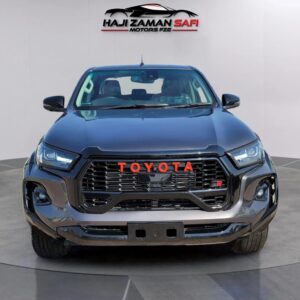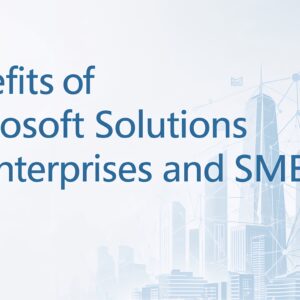In today’s data-driven environment, effective intelligence gathering depends on the tools used to capture and analyze information. From surveillance operations to criminal investigations, the integration of data acquisition systems with video enhancing software offers a powerful edge in producing actionable intelligence. This synergy not only aids professionals in reconstructing events but also ensures the reliability and clarity of evidence.
Understanding the Role of Technology in Intelligence Gathering
The digital era has transformed how intelligence is collected and analyzed. Modern operations now rely on a combination of software and hardware to streamline the process of gathering and interpreting data. The combination of a data acquisition system with video enhancing software has become indispensable in areas like law enforcement, military operations, and forensic analysis.
What Is a Data Acquisition System?
A data acquisition system (DAS) is a structured setup used to collect, digitize, and process real-time data from various sources. In the context of surveillance and investigations, these systems often gather inputs from video feeds, audio recordings, sensor data, and more.
Key Components:
- Sensors and Input Devices: Capture data such as temperature, audio, or visual input.
- Analog-to-Digital Converters (ADC): Convert raw input into usable digital formats.
- Storage Units: Archive information for later analysis.
- Processing Software: Analyze and visualize the collected data.
By organizing and synchronizing multiple data streams, DAS enables analysts to maintain situational awareness and make data-driven decisions.
How Video Enhancing Software Supports Investigations
Often, surveillance footage or captured videos are compromised by poor lighting, camera motion, obstructions, or low resolution. Video enhancing software is designed to improve the clarity, visibility, and legibility of such footage for legal or analytical use.
Functions of Video Enhancing Software Include:
- Frame-by-frame enhancement
- Noise reduction and contrast correction
- Object tracking and zooming
- Color correction and stabilization
When paired with a data acquisition system, this software becomes a powerful tool for confirming identities, interpreting events, and uncovering hidden details.
The Role of These Technologies in Intelligence Gathering
Intelligence gathering is no longer confined to boots on the ground or manual surveillance. With digital transformation, data plays a central role in understanding behaviors, tracking suspects, and predicting threats. Data acquisition systems feed real-time inputs into analytical models, while video enhancing tools bring clarity to the collected footage.
Real-World Applications:
- Criminal investigations
- Border security monitoring
- Cybercrime analysis
- Anti-terror operations
By applying enhanced video footage and structured data insights, decision-makers are better equipped to respond effectively and quickly.
The Power of Video Enhancing Software
Video enhancing software plays a critical role in refining visual information for clarity, accuracy, and usability. Whether dealing with low-light footage or pixelated surveillance clips, these programs use advanced algorithms to extract meaningful visuals.
Benefits of Video Enhancing Software:
- Improved Clarity: Sharpen blurry footage and reveal details not visible to the naked eye.
- Noise Reduction: Minimize distortions caused by poor lighting or interference.
- Frame Reconstruction: Recover missing or corrupted frames in a video sequence.
- Object Tracking: Identify and follow objects across frames for analytical review.
Together with data acquisition systems, video enhancement becomes part of a powerful toolkit in real-time or post-event intelligence workflows.
How These Technologies Support Intelligence Gathering
Intelligence gathering encompasses the systematic collection and analysis of information critical to national security, criminal investigations, and security operations. With today’s technology, the integration of DAS and video enhancing tools significantly strengthens these efforts.
Use Cases:
- Crime Scene Analysis: Enhance CCTV footage to identify suspects.
- Border Surveillance: Combine thermal and video feeds for real-time alerts.
- Military Reconnaissance: Sync multiple sensors for tactical advantage.
- Search and Rescue Operations: Use synchronized data and visuals to locate individuals quickly.
These systems not only help collect data but also validate and verify the information to ensure accuracy and authenticity.
Conclusion: The Future of Data and Visual Intelligence
As technology evolves, so does the precision and reliability of intelligence efforts. The collaboration between data acquisition system and video enhancing software represents a forward-thinking approach to modern investigations. By facilitating clear, synchronized, and usable data, these tools empower professionals to uncover the truth faster and more effectively. Whether used in public safety, defense, or forensic environments, their role in intelligence gathering is undeniable—and growing.
FAQs
1. What is a data acquisition system used for?
A data acquisition system is used to collect and process real-time data from various sources such as sensors, cameras, and microphones. It’s widely used in surveillance, industrial automation, and forensic investigations.
2. How does video enhancing software work?
Video enhancing software improves the quality of recorded footage using filters, AI-based algorithms, and frame-by-frame analysis to extract clearer and more detailed visuals.
3. Why is intelligence gathering important?
Intelligence gathering enables informed decision-making in law enforcement, national security, and crisis response by analyzing relevant and accurate information.
4. Can video enhancement be used in court?
Yes, enhanced videos, if processed correctly and verified for authenticity, are often admissible as evidence in legal proceedings.
5. How are data acquisition and video enhancement integrated?
They are integrated through synchronized systems where captured data (video, audio, or environmental) is processed and enhanced to provide a comprehensive intelligence view.





